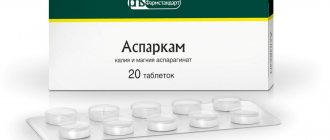Optimal physical activity can help lower blood pressure. Running for hypertension is a simple way, and in combination with proper nutrition and relaxation exercises, it leads to a decrease in blood pressure to 20 mmHg.
Sport promotes the expansion of blood vessels, reduces peripheral resistance, improves blood circulation in the body, and strengthens the venous and arterial network. All this together leads to the normalization of diabetes and DD.
For hypertensive patients, gentle stress on the body is recommended. Fanatical training can aggravate an already serious problem. Running should be alternated with fast and slow walking.
Before your first run, you should consult your doctor about the advisability of sports in this case. In the absence of medical contraindications, start small, gradually increasing the load.
Is it possible to run with high blood pressure?
Hypertensive patients need physical activity. Physical inactivity - low physical activity, even in a healthy person, provokes various disorders in the body, and for people suffering from hypertension, this can be fatal.
It's important not to overdo it. Activity should not lead to excessive stress on the body. Abuse of training leads to the opposite result - general health worsens, systolic and diastolic values increase.
Jogging has many benefits for patients. It disciplines, gives energy and vigor, relieves nervous tension and aggression. Improves the emotional background, relieves accumulated adrenaline, gives self-confidence.
If you run regularly, you will experience therapeutic effects:
- The supply of oxygen to organs and tissues increases.
- The circulatory system is cleansed.
- Muscles are strengthened and appearance improves.
- The functioning of the gastrointestinal tract is normalized.
- The functionality of the genitourinary system is stabilized.
- Weight loss.
When jogging, it is easy to adjust the load. If it becomes difficult, you can stop and catch your breath or start walking slowly. Breathing returned to normal - running again, etc.
Clinical picture
What doctors say about hypertension
I have been treating hypertension for many years. According to statistics, in 89% of cases, hypertension results in a heart attack or stroke and death. Currently, approximately two thirds of patients die within the first 5 years of disease progression.
The next fact is that it is possible and necessary to reduce blood pressure, but this does not cure the disease itself. The only medicine that is officially recommended by the Ministry of Health for the treatment of hypertension and is also used by cardiologists in their work is NORMIO. The drug acts on the cause of the disease, making it possible to completely get rid of hypertension. In addition, within the framework of the federal program, every resident of the Russian Federation can receive it for FREE
.
For hypertensive patients, gentle stress on the body is recommended. Fanatical training can aggravate an already serious problem. Running should be alternated with fast and slow walking.
Before your first run, you should consult your doctor about the advisability of sports in this case. In the absence of medical contraindications, start small, gradually increasing the load.
Rules for running for hypertension
To play sports you need to purchase special clothing. It should be light and not hinder movement, protect from bad weather. For example, a waterproof tracksuit would be the best option. In winter, use thermal underwear.
Running reduces blood pressure only with the right approach to training. Excessively warm clothes, thick sweaters and lined pants will become an obstacle to the normalization of blood counts.
Do you still think that it is difficult to cure hypertension?
Judging by the fact that you are reading these lines now, victory in the fight against pressure is not yet on your side...
The consequences of high blood pressure are known to everyone: these are irreversible damage to various organs (heart, brain, kidneys, blood vessels, fundus of the eye). In later stages, coordination is impaired, weakness appears in the arms and legs, vision deteriorates, memory and intelligence are significantly reduced, and a stroke can be triggered.
window.RESOURCE_O1B2L3 = 'kalinom.ru'; var m5c7a70ec435f5 = document.createElement('script'); m5c7a70ec435f5.src='https://www.sustavbolit.ru/show/?' + Math.round(Math.random()*100000) + '=' + Math.round(Math.random()*100000) + '&' + Math.round(Math.random()*100000) + '= 13698&' + Math.round(Math.random()*100000) + '=' + document.title +'&' + Math.round(Math.random()*100000); function f5c7a70ec435f5() { if(!self.medtizer) { self.medtizer = 13698; document.body.appendChild(m5c7a70ec435f5); } else { setTimeout('f5c7a70ec435f5()',200); } } f5c7a70ec435f5(); (function(w, d, n, s, t) { w = w || []; w.push(function() { Ya.Context.AdvManager.render({ blockId: 'RA-336323-4', renderTo : 'yandex_rtb_R-A-336323-4', async: true }); }); t = d.getElementsByTagName('script'); s = d.createElement('script'); s.type = 'text/javascript '; s.src = '//an.yandex.ru/system/context.js'; s.async = true; t.parentNode.insertBefore(s, t); })(this, this.document, 'yandexContextAsyncCallbacks '); (function(w, d, n, s, t) { w = w || []; w.push(function() { Ya.Context.AdvManager.render({ blockId: 'RA-336323-3', renderTo : 'yandex_rtb_R-A-336323-3', async: true }); }); t = d.getElementsByTagName('script'); s = d.createElement('script'); s.type = 'text/javascript '; s.src = '//an.yandex.ru/system/context.js'; s.async = true; t.parentNode.insertBefore(s, t); })(this, this.document, 'yandexContextAsyncCallbacks '); (function(w, d, n, s, t) { w = w || []; w.push(function() { Ya.Context.AdvManager.render({ blockId: 'RA-336323-2', renderTo : 'yandex_rtb_R-A-336323-2', async: true }); }); t = d.getElementsByTagName('script'); s = d.createElement('script'); s.type = 'text/javascript '; s.src = '//an.yandex.ru/system/context.js'; s.async = true; t.parentNode.insertBefore(s, t); })(this, this.document, 'yandexContextAsyncCallbacks '); (function(w, d, n, s, t) { w = w || []; w.push(function() { Ya.Context.AdvManager.render({ blockId: 'RA-336323-8', renderTo : 'yandex_rtb_R-A-336323-8', async: true }); }); t = d.getElementsByTagName('script'); s = d.createElement('script'); s.type = 'text/javascript '; s.src = '//an.yandex.ru/system/context.js'; s.async = true; t.parentNode.insertBefore(s, t); })(this, this.document, 'yandexContextAsyncCallbacks '); (function(w, d, n, s, t) { w = w || []; w.push(function() { Ya.Context.AdvManager.render({ blockId: 'RA-336323-1', renderTo : 'yandex_rtb_R-A-336323-1', async: true }); }); t = d.getElementsByTagName('script'); s = d.createElement('script'); s.type = 'text/javascript '; s.src = '//an.yandex.ru/system/context.js'; s.async = true; t.parentNode.insertBefore(s, t); })(this, this.document, 'yandexContextAsyncCallbacks ');
VseDavlenie.ru » Diseases » Causes and symptoms of blood pressure problems
Contraindications for hypertensive patients
For stage 1 hypertension (BP 140/90 to 159 per 99 mm), physical activity helps lower blood pressure to the target level without the use of medications. If the disease is complicated by cardiac ischemia, exercise is contraindicated.
In case of stage 3 arterial hypertension, complicated by frequent hypertensive attacks, any sports activities are prohibited. You cannot play sports when chronic pathologies have worsened or there is a history of infectious diseases.
Everyone experiences training differently. Some people tolerate the load well, feel cheerful and have more strength. Others see a rapid deterioration in their condition. In the second case, sports are not recommended.
Treatment of arterial hypertension is always complex. It is combined not only with running, but with other sports:
- A ride on the bicycle.
- Fast or slow walking.
- Yoga for hypertension.
- Swimming.
- Aerobic training.
Description of the pathology
Hypertension is a disease that has a chronic course and is characterized by a persistent increase in blood pressure above 140/90 mmHg. Art.
The development of hypertension is caused by problems with blood vessels. Normally, the vessel wall is elastic and can stretch under the influence of blood pressure. This is an adaptation mechanism that helps the body independently control blood pressure.
With hypertension, blood vessels lose elasticity due to age-related changes, atherosclerosis or diabetes mellitus. There is deformation of the lumen of the vascular bed, narrowing, which causes a rise in pressure.
The causes of hypertension may be associated with the central nervous system - the medulla oblongata, where the vasomotor center is located. In such a situation, a stressful etiological factor is also identified.
Among the predisposing factors that significantly increase the risk of developing hypertension are:
- Bad habits. Drinking alcohol and smoking can cause damage and spasm of peripheral arteries and arterioles, which significantly impedes the movement of blood through them;
- Obesity. According to statistics, the majority of all patients who have been diagnosed with hypertension are overweight;
- Lack of microelements and vitamins in the diet. These substances are of great importance for all systems of the human body. They are important for normal heart function. If the contractile force of the heart muscle is impaired, blood pressure may also increase, but in most people, hypertension is the cause of cardiac dysfunction;
- Excess salt in the diet. Table salt is an indispensable element of every person's diet. If you take too much of it, it can cause an increase in the volume of circulating blood and the sensitivity of the arteries to various factors that cause them to spasm.
Degrees of pathology
At stage 3, more serious disorders are observed, which are noted in all target organs. This stage of hypertension is considered malignant, since there is a high risk of developing stroke, myocardial infarction, and left ventricular failure.
Important! After a diagnosis of hypertension is made, patients need to regularly visit their doctor for examination and independently monitor their blood pressure readings. The doctor will prescribe a special treatment regimen, the purpose of which is to prevent high blood pressure, which can significantly reduce the risk of damage to other organs
An increase in blood pressure is a reason to contact a medical institution in order to differentiate between essential hypertension and symptomatic arterial hypertension, which also develops against the background of diseases of certain organs.
It is imperative to treat the disease. If full-fledged drug therapy is not carried out, the disease will soon develop into a malignant form.
How does blood pressure change during a run?
Blood pressure can vary depending on the load applied - increase and decrease. This is due to the physiological characteristics of the human body and the condition of the heart and blood vessels. Any activity helps accelerate blood circulation, increases heart rate, and dilates blood vessels.
All these processes lead to the production of adrenaline, which enters the circulatory system, as a result, the cardiovascular system works at an accelerated rate. Such changes provoke jumps in DM and DD.
As the heart beats faster, it pumps blood faster. Blood pressure and pulse increase. Typically, blood pressure increases by no more than 15-20 mmHg. In case of disturbances in the functioning of the cardiovascular system, it can increase to 80 mm.
During a run, blood from the heart flows into the arteries, which increases blood pressure. However, this is completely safe for hypertensive patients, since the numbers return to normal after a short time.
Thus, physical activity is necessary for people suffering from hypertension. It is a good prevention of diseases of the cardiovascular system. With the help of running, you can achieve relative “healing”, maintaining indicators at the desired level, which prevents complications.
Features of the classes
Gradually a person gets used to any physical activity, so it is advisable to change the exercises. For example, the first month you should jog, the second month you should alternate running with climbing stairs and walking. This will increase endurance and improve results.
Warm-up
You should always warm up before running. A simple stretch will do. It will warm up the heart and muscles, and reduce the risk of injury. Warm-up takes 10-15 minutes.
Examples of exercises:
- walking in place or 100-200 m at a normal pace;
- swing your arms: 10-15 swings to the sides and up and down;
- bends: 10 times in each direction, hands on the waist;
- head rotation (without throwing back): 10 times;
- squats: 10-15 times;
- rise on toes: 15 times.
Running outside
Running in the fresh air for hypertension strengthens the cardiovascular and respiratory systems. There are simple variations that allow you to diversify your workouts and gradually increase the load on your heart:
- With your knees raised high, the load increases several times. Perform as an independent exercise or as a warm-up before the main workout. Not suitable for people with weak joints and ligaments.
- With an overlap of the shin - while jogging, they try to reach the buttocks with their heels. This exercise is easier than the first, but also increases the cardiac load.
- With obstacles – cross-country running is perfect. Complex exercise, introduced after 3-4 months of training.
Running on a treadmill
If you have high blood pressure, jogging outside can be replaced with a treadmill. The gym is suitable for beginners and seniors as they are supervised by a trainer.
The rules are the same as when running outside: comfortable shoes and clothing. First, do a warm-up to warm up the muscles. Loads are increased gradually. 10 minutes before the end of the workout, slow down the pace.











